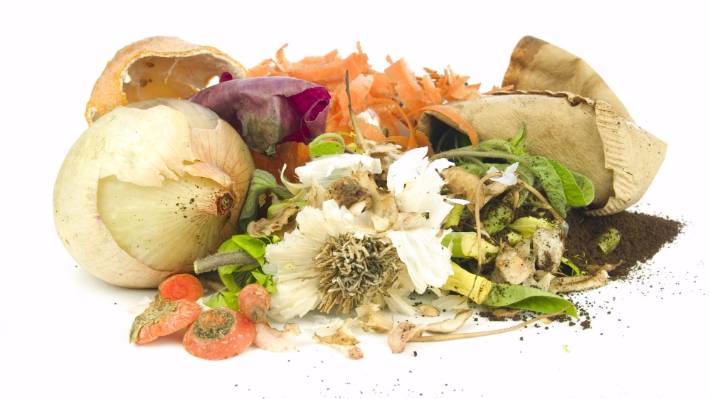Guide to Kitchen Waste
Kitchen waste is defined as left-over organic matter from restaurants, hotels, and households. Lots happen in kitchens, and by extension, lots of waste is produced in kitchens. How can you minimize that waste?
Guide to Kitchen Waste
Kitchen waste is defined as left-over organic matter from restaurants, hotels, and households. Tons of kitchen wastes are produced daily in highly populated areas. Kitchen wastes entering the mixed-municipal waste system are difficult to process by standard means, such as incineration, due to the high moisture content. Furthermore, organic matter can be transformed into useful fertilizer and biofuel. New disposal methods that are both environmentally and economically efficient are being developed which rely on various forms of microbial decomposition.
Kitchen waste is a nutrient-rich, or eutrophic, environment containing high levels of carbohydrates, lipids, proteins, and other organic molecules which can support abundant populations of microorganisms.
Waste management is important if you want to care for the environment, and can also help cut costs and minimize disposal and hauling efforts. There are many ways to go about managing the waste in your kitchen, most of which are easy and inexpensive. Here are some of the most efficient methods.
- Make Compost
Composting is something a lot of homeowners don’t consider, but it’s one of the easiest ways to get rid of certain types of food matter. It’s also great for people who enjoy gardening. Since vegetables are biodegradable, leftovers can be composted to help fertilize your property’s soil. This is one of the cheapest and most practical approaches to manage waste in the kitchen.
- Recycle
Throwing out recyclables is inadvisable because they’ll sit in landfills when they could be reused. Be sure to sort things like paper, plastic, and glass into a separate bin for your hauling service so they can be used to make newer goods. This takes a bit of effort, but will soon become second nature and greatly contribute toward the environment’s improvement.
- Install a Garbage Disposal Unit
Food disposers are attached to the drain of your kitchen sink so you can get rid of anything you don’t want to keep around or recycle. These are usually fairly affordable as far as appliances go and can greatly reduce the amount of garbage you send out to the curb.
- Buy a Trash Compactor
Unlike food disposers, compactors are free-standing units that are usually set up under kitchen counters. While a bit more expensive, they’re much better at clearing out the garbage. In fact, some of the larger units can compact as much as six trash bags into a single, smaller bag that can be taken out to the curb with less effort.
Lots happen in kitchens, and by extension, lots of waste is produced in kitchens. How can you minimize that waste?
Shop smart. Reducing kitchen waste is best done before the food even reaches the home.
Avoid over-packaged food. In the same grocery display, you may find loose tomatoes and also tomatoes both boxed and packed in non-recyclable cellophane. The tomatoes that are loose take far less packaging, so it is a better choice for the environment.
Bring your own veggie bags. You bring your own grocery bags, so it is not so different to assign one as the vegetable bag. Some people like to have several small bags to keep things like melons from squashing the grapes.
Try to choose recyclable containers. Whenever feasible, choose packaging that can be recycled.
Buy what you need, not just because it is a good deal. There is nothing wrong with buying in bulk. But if you do not use what you buy, or it spoils, it is wasted money and resources. It may be more sensible to buy a smaller container, even if it is a bit more expensive by weight.
Reuse grey water. Kitchens tend to produce a lot of grey water (which is defined as all the wastewater from houses and offices except for that from toilets) and most of this can be reused, thus conserving water. For our purposes, we are going to divide kitchen grey water into two subcategories: "clean" (such as the water that is left over from boiling vegetables or pasta) and "dirty" (such as the water used to wash vegetables).
Dirty greywater can be used for:
Washing other vegetables or dishes
Cleaning counters/floors
Adding to swimming pools
Watering plants
Clean greywater can be used for all of those things plus:
Boiling vegetables/ pasta
Drinking- although it may have an unusual taste depending on what it was used for
Wash vegetables and fruits in containers instead of under running water. The typical method of scrubbing fruits and vegetables under a running faucet uses much more water than filling a pot or large bowl with water and scrubbing it in there. This is especially useful (and much easier) when you are washing something like blueberries or grapes, and there are a lot of tiny objects since you can dump them all in and rub them around.
Make meals based on what you have. Try to use what you have before buying more food, or incorporate what you need to use up in your food planning. Squeezing one more meal out of your pantry and refrigerator reduces waste, saves money, and sometimes inspires new meals!
Try using Google.com to find recipes using ingredients you have. For instance, if you are looking for a meal using spinach and chicken, use the keywords "chicken", "spinach" and "recipe".
Some meals are time-tested to use up leftovers and odd bits of foods, such as pizza, meatloaf, pasta dishes, and stir-fry.
Know when to disregard use-by dates. Contrary to common belief, the dates on food products are not typically government-mandated or regulated. "Use by" dates usually just relate to taste and texture. Your cereal just does not suddenly goes bad at midnight on January 23rd. This means that often products can be used after that date has passed. Use smell, sight, and your good judgment to decide if something is edible--you can usually tell if the milk has gone bad. However, some guidelines for eating "expired" food:
Opened cans, jars, and bottles will remain relatively safe a long period of time. However, once opened the quality will deteriorate.
Never eat from a can that looks "inflated"...this is a sign botulism may have crept in.
Throw out food that is more than a year out of date. A few things, like salt or honey, can remain almost indefinitely edible. However, there are a lot of variables: how it was stored, the moisture content, preservatives, and so on.
But remember: food poisoning is a real danger, and after a certain point, eating a can of 2-year-old pork and beans is not worth your health!
Eat things in the order they are likely to go bad. Raspberries go bad faster than apples, and the leftovers from Monday will probably spoil before the leftovers from Wednesday.
Reuse and recycle food packaging. Oil needs to be disposed of in a container- why not the cream cheese container? Need to send your kid on a field trip with an all-disposable lunch? Pack the sandwich in the Cool Whip container! If you do not have a use for it, recycle it! You can keep a recycling bin next to your garbage can, or under the sink to make recycling easy.
References:
<http://peninsulahauling.com/ways-to-manage-kitchen-waste/1769/>
<https://www.wikihow.com/Reduce-Kitchen-Waste>
Search
Categories
Popular Posts



















Comments: 0
No comments